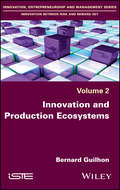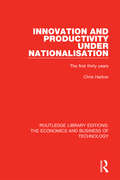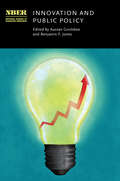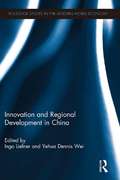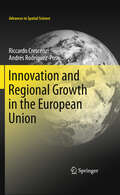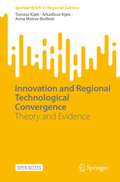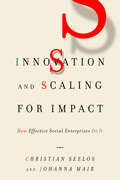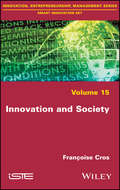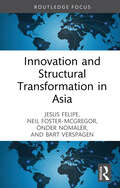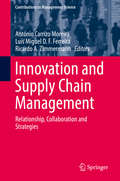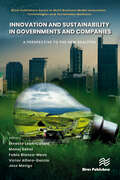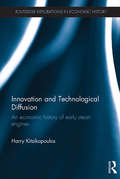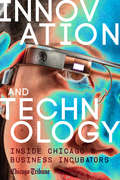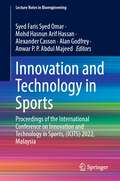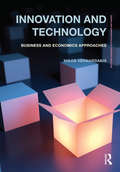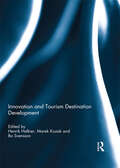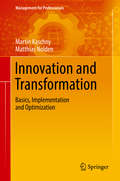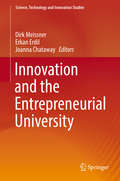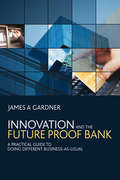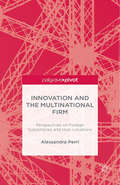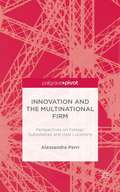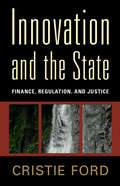- Table View
- List View
Innovation and Production Ecosystems
by Bernard Guilhon“We do not know where Silicon Valley is really located”, Feldman writes, because these types of organization, when they are dynamic, are moving and fluid. Innovation and production ecosystems or clusters are proliferating today because they seem to be adapted to the demands of innovation, growth and employment. The process leading to their institutionalization escapes a summary analysis of the behavior triggered by monetary incentives or, at the very least, makes it richer. The relational aspect becomes predominant, the interactions between the participants testify to the difficulty of separating the geographical and social dimensions. In the most prominent American clusters, public/private linkages and the building of social links express the centrality of networks in the innovation process. The European vision seeks to articulate entrepreneurial discoveries with vertical public interventions. The competitiveness poles in France suffer from the fact that public choices seem to be torn between two contradictory objectives: efficiency and equity.
Innovation and Productivity Under Nationalisation: The First Thirty Years (Routledge Library Editions: The Economics and Business of Technology #18)
by Chris HarlowOriginally published in 1977, this book examines the choice of new production techniques available to the publicly owned industries during their first thirty years and the effectiveness with which these techniques were put to use. In the heat of political debate over nationalisation the basic economic issues involved are frequently obscured: this volume shows how the opportunity to gain advantages of scale offered by nationalisation and the new techniques which scale made possible were pursued by the public corporations through policies of innovation and the diffusion of technical advances.
Innovation and Public Policy (National Bureau of Economic Research Conference Report)
by Austan Goolsbee Benjamin F. JonesUsing the latest empirical and conceptual research for readers in economics, business, and policy, this volume surveys the key components of innovation policy and the social returns to innovation investment. In advanced economies like the United States, innovation has long been recognized as a central force for increasing economic prosperity and human welfare. Today, the US government promotes innovation through various mechanisms, including tax credits for private-sector research, grant support for basic and applied research, and institutions like the Small Business Innovation Research Program of the National Science Foundation. Drawing on the latest empirical and conceptual research, Innovation and Public Policy surveys the key components of innovation policy and the social returns to innovation investment. It examines mechanisms that can advance the pace of invention and innovative activity, including expanding the research workforce through schooling and immigration policy and funding basic research. It also considers scientific grant systems for funding basic research, including those at institutions like the National Institutes of Health and the National Science Foundation, and investigates the role of entrepreneurship policy and of other institutions that promote an environment conducive to scientific breakthroughs.
Innovation and Public Policy (National Bureau of Economic Research Conference Report)
by Austan Goolsbee Benjamin F. JonesUsing the latest empirical and conceptual research for readers in economics, business, and policy, this volume surveys the key components of innovation policy and the social returns to innovation investment. In advanced economies like the United States, innovation has long been recognized as a central force for increasing economic prosperity and human welfare. Today, the US government promotes innovation through various mechanisms, including tax credits for private-sector research, grant support for basic and applied research, and institutions like the Small Business Innovation Research Program of the National Science Foundation. Drawing on the latest empirical and conceptual research, Innovation and Public Policy surveys the key components of innovation policy and the social returns to innovation investment. It examines mechanisms that can advance the pace of invention and innovative activity, including expanding the research workforce through schooling and immigration policy and funding basic research. It also considers scientific grant systems for funding basic research, including those at institutions like the National Institutes of Health and the National Science Foundation, and investigates the role of entrepreneurship policy and of other institutions that promote an environment conducive to scientific breakthroughs.
Innovation and Regional Development in China (Routledge Studies in the Modern World Economy #120)
by Ingo Liefner Yehua Dennis WeiAlthough China is now the ‘factory of the world’, there is no reason to expect that it will always be content with manufacturing labor-intensive goods for foreign corporations. Scholars must now ask: What is the current level of innovation in China? And how can we face this challenge and renovate industrial production and innovation capacities in developed countries? This edited volume investigates the unique characteristics of Chinese innovation and regional development, China’s policy framework, and the role that transnational corporations play in China’s increasing innovation activities. This book contributes to the heated debate regarding pathways for technology progress and regional development in developing countries, and identifies the ways in which local production networks respond to different configurations of external linkages. Linking patterns of global and local production networks with the trajectories of technology development and regional development allows the authors to theorize and test whether, and how, particular configurations of production networks generate divergent long-term local productivity growth and technological development outcomes. Innovation and Regional Development in China will be of interest to geographers, economists, China specialists, development specialists, and scholars working on innovation and regional development in developing areas and transition countries.
Innovation and Regional Growth in the European Union
by Andrés Rodríguez-Pose Riccardo CrescenziThis book investigates the EU's regional growth dynamics and, in particular, the reasons why peripheral and socio-economically disadvantaged areas have persistently failed to catch up with the rest of the Union. It shows that the capability of the knowledge-based growth model to deliver its expected benefits to these areas crucially depends on tackling a specific set of socio-institutional factors which prevents innovation from being effectively translated into economic growth. The book takes an eclectic approach to the territorial genesis of innovation and regional growth by combining different theoretical strands into one model of empirical analysis covering the whole EU-25. An in-depth comparative analysis with the United States is also included, providing significant insights into the distinctive features of the European process of innovation and its territorial determinants. The evidence produced in the book is extensively applied to the analysis of EU development policies.
Innovation and Regional Technological Convergence: Theory and Evidence (SpringerBriefs in Regional Science)
by Tomasz Kijek Arkadiusz Kijek Anna Matras-BolibokThis open access book explores the role of innovation in technological convergence processes in the EU regional space and shifts the focus from absolute and conditional income convergence to technological convergence and its determinants. Presenting new theoretical and empirical evidence on the determinants and trajectory of the EU region’s development and convergence, this book will appeal to scholars of economics and regional science, as well as practitioners and policymakers interested in the policy implications of regional technological convergence. The presented findings will also contribute to the development of the knowledge-based economy paradigm in the regional context.
Innovation and Scaling for Impact: How Effective Social Enterprises Do It
by Christian Seelos Johanna MairInnovation and Scaling for Impact forces us to reassess how social sector organizations create value. Drawing on a decade of research, Christian Seelos and Johanna Mair transcend widely held misconceptions, getting to the core of what a sound impact strategy entails in the nonprofit world. They reveal an overlooked nexus between investments that might not pan out (innovation) and expansion based on existing strengths (scaling). In the process, it becomes clear that managing this tension is a difficult balancing act that fundamentally defines an organization and its impact. The authors examine innovation pathologies that can derail organizations by thwarting their efforts to juggle these imperatives. Then, through four rich case studies, they detail innovation archetypes that effectively sidestep these pathologies and blend innovation with scaling. Readers will come away with conceptual models to drive progress in the social sector and tools for defining the future of their organizations.
Innovation and Society: Education And Formation
by Françoise CrosThis book takes stock of the state of the question on innovation in a particular area of education and training. But for this it must be noted that economists have appropriated the notion since Schumpeter and have constrained to think innovation in professions of intervention on others as if they were products to be delivered to the customer as quickly and the best (frugal innovation). Here the author brings a nuance and demonstrates the specificity of innovations in "soft" areas, their richness, while drawing the reader to caution and criticism because any innovation is not good in itself: it can Produce adverse effects in the medium and long term. The author proposes two supports for innovation: on the one hand the approach by its most objective evaluation which itself induces an innovation in its evaluation and, on the other hand, an approach to values and therefore to philosophy of the desired future man. A detour on the history of innovation, on its international approaches, on the imaginary investments it is often the object of (with a nuance of utopia) makes it possible to understand why innovation has been a means To drive the reforms and to convince people for a better future.
Innovation and Structural Transformation in Asia
by Jesus Felipe Neil Foster-McGregor Bart Verspagen Önder NomalerThis book explores recent drivers of Asia’s growth and economic development. The analysis is based on a database created by the authors. It covers a large number of economies, including 39 from Asia for the period 1990–2020.The database and the analysis in the book use novel indicators of development. It is structured along four areas: productivity and structural change, global value chains (GVCs), economic complexity, and the Fourth Industrial Revolution (4IR). The book offers insights into current economic performance and future prospects. It shows great heterogeneity across the region, highlighting a range of development experiences. Each chapter contains an accessible methodological section of the concepts used, explaining the construction of indicators and how they should be interpreted.The book will interest scholars of Asian economics, structural transformation, productivity, GVCs, complexity, and 4IR studies. The publicly available database will also appeal to policymakers and researchers interested in data analysis.
Innovation and Supply Chain Management: Relationship, Collaboration And Strategies (Contributions To Management Science Series)
by António Carrizo Moreira Ricardo A. Zimmermann Luís Miguel FerreiraThis book examines key issues, challenges, opportunities and trends in innovation processes and supply chain management. It proposes ways for organizations to improve their performance by developing business strategies, establishing business innovation activities, and aligning business and innovation activities among firms. Further, it showcases and analyzes the implementation of inter- and intra-organizational process improvement activities and the implementation of organizational innovation solutions to address new product and process-related collaborative relationships across the supply chain. The book is useful for researchers, academics and professionals, presenting some of the most advanced research, concepts, and case studies on the relationship between innovation and supply chain.
Innovation and Sustainability in Governments and Companies: A Perspective to the New Realities (River Publishers Series in Multi Business Model Innovation, Technologies and Sustainable Business)
by Fabio Blanco-Mesa Manoj Sahni Ernesto Leon-Castro Victor Alfaro-Garcia Jose MerigoInnovation and sustainability are issues that have become very relevant in recent years. This book presents a compilation of investigations on these topics, divided into those applied in government or enterprises. The objective is to demonstrate to the audience how these issues have been worked around the world and in different scenarios. Among the papers, there are works related to economic variables, imports, exports, and analysis in different sectors such as tourism, agriculture, education, and even in countries in general.
Innovation and Technological Diffusion: An economic history of early steam engines (Routledge Explorations in Economic History)
by Harry KitsikopoulosThis book deals with two key aspects of the history of steam engines, a cornerstone of the Industrial Revolution, specifically the road that led to its discovery and the process of diffusion of the early steam engines. The first part of the volume outlines the technological and scientific developments which took place between the 16th and 18th centuries, proving critical for the invention of this strategic technology. The most important question addressed is why did England come up with this innovation first as opposed to other countries (e.g., France, Italy), which were more advanced in terms of knowledge pertinent to it. The second part of the volume traces the process of diffusion of the early steam engines, the Newcomen model, through to 1773, the year prior to the first commercial application of the second generation of steam engines (the Watt model). The process of diffusion is quantified on the basis of a novel method before proceeding with a discussion of the main determinants of this process. Kitsikopoulos pulls together a large amount of relevant evidence found in primary sources and more technically oriented literature which is often ignored by economic historians. This book will be of interest to economic historians and historians of technology.
Innovation and Technology
by Chicago Tribune StaffCulled from the pages of the Chicago Tribune, this collection of articles features the most relevant and recent business stories on innovation, entrepreneurship, and technology as reported by the award-winning Tribune columnists and reporters. Innovation and Technology encapsulates the cutting-edge developments in the tech world that are affecting large corporations, small business, start-ups, and consumers alike.Innovation and Technology is divided into three main sections: Innovation in Chicago, Profiles in Innovation, and Technology in the News. The Innovation in Chicago section discusses the latest start-ups in Chicago, as well as how innovative technologies (anywhere from 3D printing to so-called "civic" apps) are being used by businesses and institutions throughout the Windy City.The Profiles in Innovation section is full of fascinating interviews with thought leaders, business owners, CEOs, and entrepreneurs from the Midwest and Greater Chicagoland area. Finally, the Technology in the News section gathers the big tech stories of 2013, from Google Glass to the latest investments in burgeoning new companies. Extensive first-person interviews and in-depth reporting by the Chicago Tribune makes Innovation and Technology a broad yet detailed look at the larger concept of innovation and how it pertains to individuals and businesses on the local level.
Innovation and Technology in Sports: Proceedings of the International Conference on Innovation and Technology in Sports, (ICITS) 2022, Malaysia (Lecture Notes in Bioengineering)
by Mohd Hasnun Arif Hassan Anwar P. P. Abdul Majeed Syed Faris Syed Omar Alexander Casson Alan GodfreyThis book presents the proceedings of ICITS 2022 covering different tracks in the field of Sports Engineering and Technology, namely, Instrumentation, Materials, Data Analytics, Biomechanics, Simulation, Equipment Design and Performance Analysis, amongst others. This collection of articles deliberates the key challenges as well as technological innovations that facilitate the enhancement of sporting performance. The readers are expected to gain an insightful view on the current trends, issues, mitigating factors, technological innovations as well as proposed solutions.
Innovation and Technology: Business and economics approaches (Routledge Advanced Texts in Economics and Finance)
by Nikos VernardakisInnovation has revolutionized the world economy, yet it remains often misunderstood. This textbook seeks to elucidate the nature and impact of innovation for both undergraduate and graduate students. Innovation and Technology examines the impact of innovation on both economic theory and the real world. It addresses the topic at the level of policy and also drills down to provide analysis of firms. This book moves beyond the plethora of specialized studies on the subject and formulates a unified and comprehensive approach, encompassing the topic’s huge breadth and scope. Issues such as innovation, knowledge, incentives, information and regulation are featured. Designed for MBA, Economics and Business students, this textbook will be useful to those interested in innovation, entrepreneurship and the economics of technology.
Innovation and Tourism Destination Development
by Henrik Halkier, Marek Kozak and Bo SvenssonTourism is a central part of regional development strategies in many localities around Europe, not just in traditional coastal or mountain resorts but also in areas without a strong track record with regard to visitor economy. In a globalising world, destinations can no longer take their traditional visitors for granted and escape growing competitive pressures, because increasingly experienced, specialised and demanding travellers now have a vastly greater number of potential destinations to choose from. Both well-established and emerging tourist destinations are therefore under pressure to be innovative to increase their attractiveness in the globalising visitor economy. This book focuses on the role played by tourist destinations – conceived as multi-layered and functional governance structures – in stimulating or complicating the development of new tourist experiences. The complex relationship between firm-level and territorial development dynamics is, of course, by no means confined to tourism development, and the book will therefore be of a more general relevance for research into innovation and spatial development dynamics.This book was published as a special issue of European Planning Studies.
Innovation and Transformation: Basics, Implementation And Optimization (Management For Professionals)
by Martin Kaschny Matthias NoldenThis book discusses a six-step transformation cycle in which the tasks of innovation management – ranked according to their relevance for companies – are placed in a systematic order. Presenting an in-depth discussion on innovation and transformation, the authors delve into strategic themes such as business models and strategic positioning, which are fundamental to the innovation process. It also describes the underlying processes and roles of innovation management, and the required organizational structures. Following process organization and organizational structure, the authors highlight how the appropriate human resource strategy should look and the manner of personnel selection or development to be implemented. The authors also provide tools and systems that are assigned to specific employees working with innovation management; these deal with innovation audit, knowledge management, idea management, financing and budgeting innovations, marketing and property rights. The book also sheds light on how the effectiveness of the innovation process can be monitored using indicator systems. This is a handy resource for managers looking for a structured strategy and how to implement it to achieve optimal innovation management and reap its benefits.
Innovation and the Entrepreneurial University (Science, Technology and Innovation Studies)
by Dirk Meissner Erkan Erdil Joanna ChatawayThe book explores different approaches towards the ‘entrepreneurial university’ paradigm, explores channels and mechanism used by universities to implement the paradigm and contributes to the public discussion on the impact of commercialization on university research and knowledge. It argues that different types of university-industry interaction may have repercussions even on funding of basic research if an appropriate balance is ensured between the two. University activities – both research and education in all forms – should provide economic and social relevance directed towards open science and open innovation. This book adds value to current knowledge by presenting both a conceptual framework and case studies which describe different contexts.
Innovation and the Evolution of Industries
by Malerba, Franco and Nelson, Richard R. and Orsenigo, Luigi and Winter, Sidney G. Franco Malerba Richard R. Nelson Luigi Orsenigo Sidney G. WinterThe disruptive impacts of technological innovation on established industrial structures has been one of the distinguishing features of modern capitalism. In this book, four leading figures in the field of Schumpeterian and evolutionary economic theory draw on decades of research to offer a new, 'history-friendly' perspective on the process of creative destruction. This 'history-friendly' methodology models the complex dynamics of innovation, competition and industrial evolution in a way that combines analytical rigour with an acknowledgement of the chaotic nature of history. The book presents a comprehensive analysis of the determinants and patterns of industrial evolution, and investigates its complex dynamics within three key industries: computers, semiconductors, and pharmaceuticals. It will be of great value to scholars and students of innovation and industrial change, from backgrounds as varied as history, economics and management. Its coverage of new methodological tools is also useful for students who are new to evolutionary economic theory.
Innovation and the Future Proof Bank
by Gardner James AInnovation, the conversion of the new to business as usual, is a very special business process. It is the business process able to reprogram all others. Creating the practices that make this process work is a key challenge for all in financial services that are worried about responding to the future. When an institution can identify things that are outside its present practices and convert them, production line style, into products, processes, cultural changes, or new markets, it will never be outpaced by internal or external change again. The institution becomes "FutureProof". This is a book about those practices in banks. It explains, using examples from institutions around the world, what it takes to create an innovation culture that consistently introduces new things into undifferentiated markets and internal cultures. It shows how banks can leverage the power of the new to establish unexpected revenue lines, or make old ones grow. And it provides advice on the social and political factors that either help or hinder the germination of the new in banks. Moreover, though, this is a book about the science of innovation in a banking context. Drawing from practices already highly developed in financial services-managing portfolios of assets to mitigate risk-it explains how practitioners can run their innovations groups like any other business line in the bank one that delivers a return on investment predictably and at high multiples of internal cost of capital. For leaders, Innovation and the Future Proof Bank provides the diagnostic tools to guide benchmarking and investment decisions for the innovation function. And for innovation practitioners, the book lays out everything needed to make sure that converting the new to business as usual is predictable, measurable, and profitable.
Innovation and the Multinational Firm: Perspectives on Foreign Subsidiaries and Host Locations
by A. PerriIn the changing geography of innovation, multinational corporations play a key role as creators of knowledge. Innovation and the Multinational Firm investigates how innovation is managed within these firms by focusing particularly on subsidiaries and host-locations.
Innovation and the Multinational Firm: Perspectives on Foreign Subsidiaries and Host Locations
by Alessandra PerriInnovation and the Multinational Firm.
Innovation and the State: Finance, Regulation, and Justice
by Cristie FordFrom social media to mortgage-backed securities, innovation carries both risk and opportunity. Groups of people win, and lose, when innovation changes the ground rules. Looking beyond formal politics, this new book by Cristie Ford argues that we need to recognize innovation, and financial innovation in particular, as a central challenge for regulation. Regulation is at the leading edge of politics and policy in ways that we have not yet fully grasped. Seemingly innocuous regulatory design choices have clear and profound practical ramifications for many of our most cherished social commitments. Innovation is a complex phenomenon that needs to be understood not only in technical terms, but also in human ones. Using financial regulation as her primary example, Ford argues for a fresh approach to regulation, which recognizes innovation for the regulatory challenge that it is, and which binds our cherished social values and our regulatory tools ever more tightly together.
Innovation and the Transformation of Consumer Law: National and International Perspectives
by Dan Wei Claudia Lima Marques James P. NehfThis book covers technologies that pose new challenges for consumer policy, creative developments that can help protect consumers’ economic interests, innovative approaches to addressing perennial consumer concerns, and the challenges entailed by emerging ways of creating and delivering consumer products and services. In addition, it reflects on past successes and failures of consumer law and policy, explores opportunities for moving consumer law in a different direction, and discusses potential threats to consumer welfare, especially in connection with the changing political landscape in many parts of the world. Several chapters examine consumer law in individual countries, while others have an international focus.
